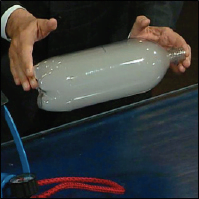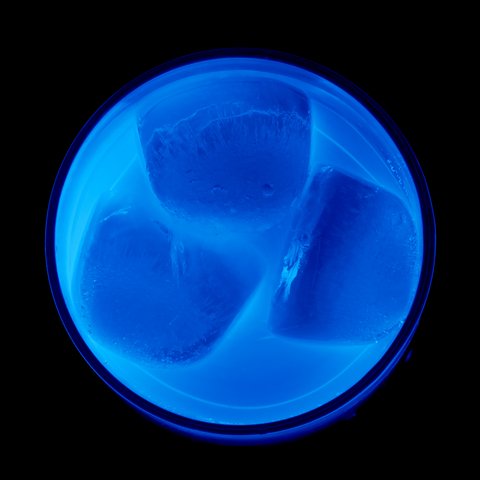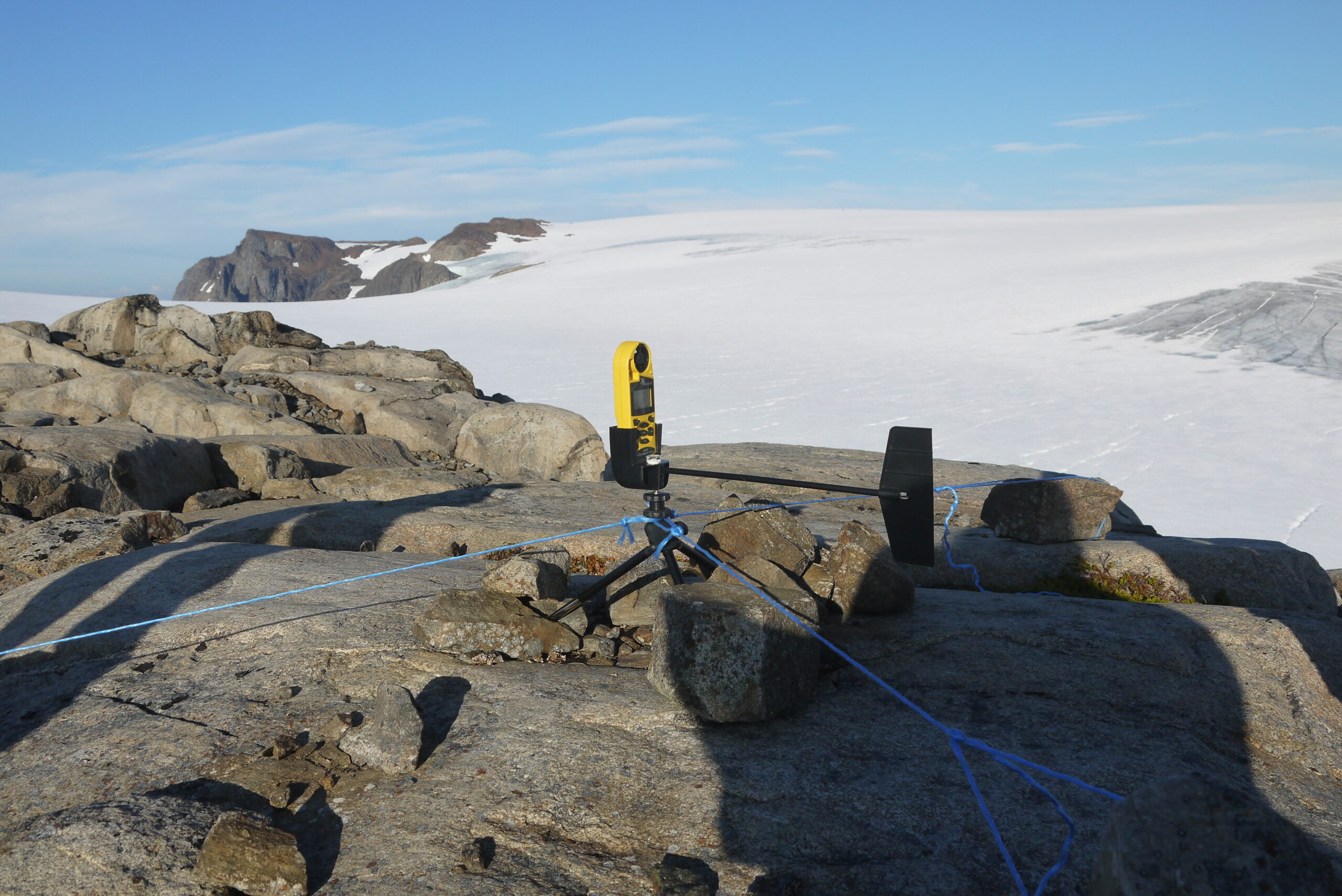Infrared Thermometer Guidance
Infrared thermometers can be used to explore a range of questions, including:
– What is the temperature of the clouds?
– What is the greenhouse effect?
– If it is sunny, how does the temperature of dark/ light/ reflective things vary?
– Do clothes insulate?
– Which are the best/ worst insulated school buildings?
– What is the temperature of the Sun?
– What is the air temperature?
– How does evaporation depend on temperature?
Which questions you explore will depend on the weather, and level and ability of your students.
Basic Information about the Infrared Thermometers:
The thermometers are used by pointing them at the object you want to measure the temperature of (they don’t have to touch it!) and by pressing and holding the large black button on the front of the thermometer. They detect the infrared (IR) radiation (heat) given off by the object and from it, calculate the temperature of the object. It is the same principle that is used by wildlife photographers to detect animals at night. They do not give an accurate reading from a shiny surface.
Please be aware that the thermometers are equipped with a laser pointer on the front. For safety reasons, these have been covered up, and should not be uncovered. The yellow/ black thermometers have a laser button which should be switched off (no laser symbol on the display screen) to save battery power.
The infrared thermometers we send out have an optical resolution of 12:1 distance to spot ratio. This means that they can measure the temperature of an object which is at least 1/12 of the size of the distance the thermometer is away from the object. So, the temperature of an object 1m high and 1m wide can be measured from up to 12m away, whereas the temperature of a cloud 1km wide can be measured from up to 12km away. The further something is away, the bigger it has to be for you to be able to measure its temperature.
For experts: The thermometers respond to 8–14 μm (long-wavelength infrared)—this range is not affected by water vapour or CO2 absorption. By integrating the Planck function over this range (Planck’s law describes the amount of energy emitted by a black body as radiation of a certain wavelength), the temperature of the dominant infrared source in the field of view may be obtained.
As an introduction, students could be asked to see what the coldest and warmest objects they can find are. They can compare the temperature of bare skin (face or hands) and clothes. If the sun is not actively heating up dark clothing, then the clothing should be cooler than the bare skin, demonstrating the insulating properties of clothing. By pointing the thermometer into an open mouth (without making contact!) you can get a good estimate of body core temperature.
Activity 1: What effect does colour have on temperature?
This activity works best on a sunny day.
Ask the students to compare the temperature of similar dark- and light-coloured objects. Zebra crossings and cars of different colours standing in a car park are particularly good for this. When asked why, for example, the black strip on a zebra crossing is warmer than the white stripe, students will usually respond that dark colours absorb heat better than light colours. Although this is true, it is the fact that they also absorb light better that is more important in this case. The Sun emits more light than heat. Dark colours look dark because they have absorbed the Sun’s light rather than reflecting it back in the direction of our eyes.
Sunny and shady
If the sun is shining, measure the temperature of the ground (eg tarmac, concrete, grass) in sunlight and nearby in shade.
Wet and dry
Put some water on part of a tarmac or concrete surface and leave it for a couple of minutes. Does the wet bit have the same temp as the dry bit? If not, why not?
Activity 2: What is the temperature of the clouds?
First, point the thermometers at a range of objects in the shade on the ground and get an estimate for the air temperature at ground level. Next, point the thermometer at any cloud (there may well be several types of clouds visible, which will give different results) and measure its temperature. Are the clouds warmer or colder than the ground? So does temperature rise or fall with height?
Temperature falls with height. The Sun warms the ground. The ground warms the air in contact with it (by conduction). The warm air rises, and, as it rises, the air pressure falls (air pressure is due to the weight of air above us. As you go up in the atmosphere, there is less air left above you and so the air pressure falls) and it cools (this is called adiabatic ascent and P/T=constant).
This can be related to the water cycle – as temperature falls, the rate of condensation becomes faster than the rate of evaporation and water droplets form to make clouds.
So why is the cloud base usually flat? It marks the level in the atmosphere where the temperature is just right for cloud droplets to form.
So what are high clouds made of? The highest clouds, called cirrus, are made of ice crystals which gives them their wispy appearance.
You can calculate the height of the clouds by assuming that the temperature falls by 6°C for every km of height (or use 10°C/ km for less able students).
Find a cloud key, chart or wheel to help you name the clouds.
Activity 3: Which buildings are best insulated?
This is a good activity for a cold winter’s day when the Sun is not shining.
Use the IR thermometers to investigate surrounding buildings – what is warmest, walls, windows or doors? The less well insulated a building is, the more heat it is letting out and the warmer the outside of the building will be. Are older buildings less well insulated than newer ones? Where would you recommend the school to invest in insulation?
Activity 4: What is the blue sky temperature?
Ask the students to measure the temperature of any blue sky visible. What are they measuring the temperature of? Some will respond ‘the ozone layer’. Whilst this is technically correct – ozone in the stratosphere absorbs the Sun’s ultraviolet (UV) light and re-emits the energy as heat, the ozone layer is sufficiently high up to not have a major impact on the temperature measured. Greenhouse gases in the atmosphere (water vapour, carbon dioxide, methane etc.) emit heat towards the Earth’s surface and therefore the infrared thermometers.
If the sky is completely blue, how does the temperature vary from the horizon to vertically upwards? Usually, the sky is warmer near the horizon than straight up.
When the thermometer is pointing straight up (yellow arrow) it is looking through a fairly thin bit of the Earth’s atmosphere. When it is pointing towards the horizon (blue arrow) it is looking through much more atmosphere, therefore there is more greenhouse gas and more heat being radiated in the direction of the thermometer.
More Information (page 1 and 4)
Activity 5: What is the temperature of the Sun?
Students should be reminded never to look at the Sun!
If pointing the IR thermometer away from the sun on a clear summer’s day gives a temperature of z and pointing direct at the sun gives y.
Sun to Earth distance DSE is 149,600,000 km
Diameter of spot at this distance = DSE /12
Radius of spot at this distance = DSE /(12×2)
Spot size at this distance =pi(149,600,000/(12×2))2=1.22×1014 km2
Diameter of the Sun, D, is 1,392,000km
Area of the sun is pi(D/2)2 = 1.52×1012km2
So, the Sun covers 1.52 x1012 / 1.22×1014 , about 1/80th of the field of view.
y = ((79 x z) + (Ts x 1))/80
We have estimated the temperature of the Sun,Ts, between 2500K and 4500K using this method.
The accepted temperature of the Sun is 5778K. Possible sources of error include the fact that the Sun doesn’t emit much radiation in this IR band, and that the atmosphere is scattering the incoming radiation away from a straight line path from the Sun to the thermometer, reducing the reading.
Activity 6: What is the air temperature?
Air temperature is not easily measured with an IR thermometer. However, to get a reasonable estimate, we suggest using sheets of A4 white paper. They will only take a few minutes to adjust to the local temperature (as would any other thermometer) and could be placed on the ground in different locations, or hung off bushes etc. with clothes pegs or bluetack. The IR thermometers can then be used to measure the temperature of the paper.
Activity 7: How do Evaporation Rates depend on temperature?
The Key Stage 2 National Curriculum asks students to investigate the effect of air temperature on evaporation rates. However, wind speed and sunlight can play a much larger role, swamping the signal from air temperature. By measuring the temperature of the object using an infrared thermometer, rather than the air temperature, you should get much better results, as the temperature of the object will reflect the amount of sunlight it is absorbing as well as any wind chill.
| Object | Temperature (oC) | Is it sunny or not? |
| White car | ||
| Black car | ||
| Grass | ||
| Tarmac | ||
| Object in sunshine | ||
| Object in shade | ||
| Dry tarmac | ||
| Wet tarmac | ||
| Cloud (what type?) | ||
| Cloud (what type?) | ||
| Blue sky | ||
| Your forehead | ||
| Your clothes |
Use this table to write down the temperatures of things you measure. Choose some things of your own to measure and write their temperatures in the last few rows.



